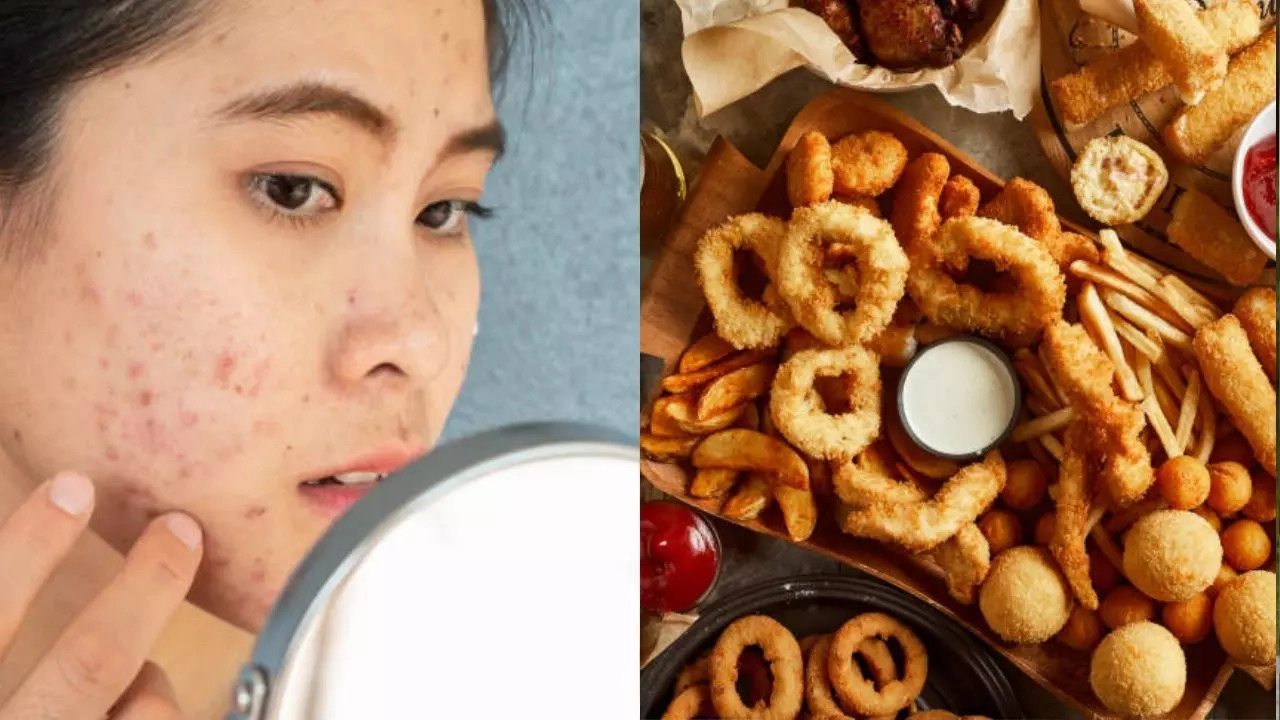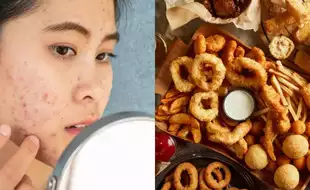
THESE Foods Are Known to Cause Acne – Are You Eating Them Daily? (Image Credits: iStock)
Acne, a common skin problem, affects millions of people worldwide, from teenagers to adults. While hormones, stress, and genetics play significant roles in causing acne, recent studies suggest that diet also has a major impact. Certain foods have been linked to inflammation, hormone fluctuations, and other bodily reactions that can lead to or worsen acne. If you've been experiencing persistent breakouts, it might be worth considering the role of your diet. Here we have made a list of foods that are known to trigger acne.
1. High-Glycemic Foods
High-glycemic foods are those that rapidly raise blood sugar levels. Common examples include white bread, sugary snacks, sugary beverages, and other processed carbohydrates. According to a study published in the Journal of the American Academy of Dermatology, a diet rich in high-glycemic foods increases insulin levels, leading to higher levels of androgen hormones and sebum production, both of which can contribute to acne development.
The spike in blood sugar also triggers inflammation, making the skin more prone to breakouts. A low-glycemic diet, on the other hand, can help reduce acne severity. In a study from The American Journal of Clinical Nutrition, participants who switched to a low-glycemic diet saw a significant improvement in their acne over a period of 10 weeks.
2. Dairy Products
Milk, cheese, and other dairy products are commonly associated with acne, though the exact reason why is still under research. Some studies suggest that the hormones present in milk, particularly in skim milk, can influence the production of insulin-like growth factor 1 (IGF-1), which promotes oil production and, consequently, acne. A review in the Journal of the American Academy of Dermatology found that teenagers who consumed more milk, especially skim milk, had higher rates of acne.
While not everyone may experience breakouts from dairy, some dermatologists recommend reducing or eliminating dairy intake to see if it has any effect on skin health.
3. Sugar and Sugary Foods
Sugar, especially when consumed in high amounts, has been shown to have a direct link to acne. Sugary foods spike blood sugar levels, leading to an increase in insulin. Elevated insulin can lead to hormonal changes that increase sebum production. Excess sebum clogs the skin's pores, creating an environment where acne-causing bacteria thrive.
A study published in Cutis reported that people with a high intake of sugar and sugary foods were more prone to acne than those with low-sugar diets.
4. Fast Food and Fried Foods
Fast food items like burgers, fries, and pizza are high in unhealthy fats, refined carbs, and added sugars. This combination can lead to acne by creating inflammation in the body and raising insulin levels. Studies have linked frequent consumption of fast food to an increased risk of acne. For instance, a study conducted by BMC Dermatology found that teenagers who frequently ate fast food experienced higher rates of acne than those who rarely indulged.
Fast food is also typically high in omega-6 fatty acids, which are known to promote inflammation. An imbalance of omega-6 to omega-3 fatty acids in the body has been associated with inflammation-related conditions, including acne.
5. Chocolate
Chocolate, especially milk chocolate, has been thought to cause acne for years, though research remains mixed on this. Some studies have shown a positive correlation between chocolate consumption and acne, particularly for milk chocolate. Dark chocolate with a higher cocoa content and less sugar might be a better option for those who notice acne flare-ups after eating chocolate.
Get Latest News Live on Times Now along with Breaking News and Top Headlines from Diet, Health and around the world.

